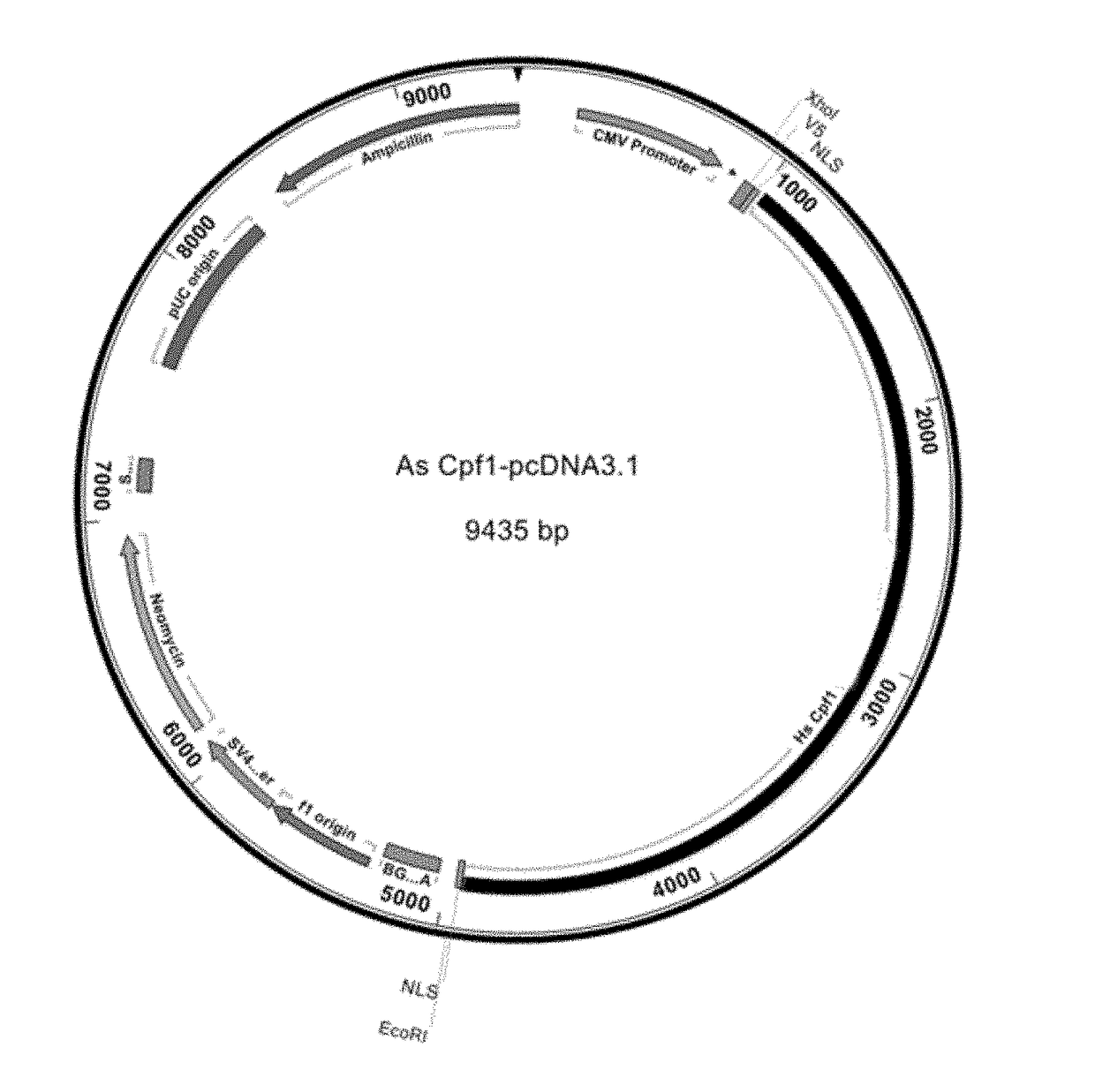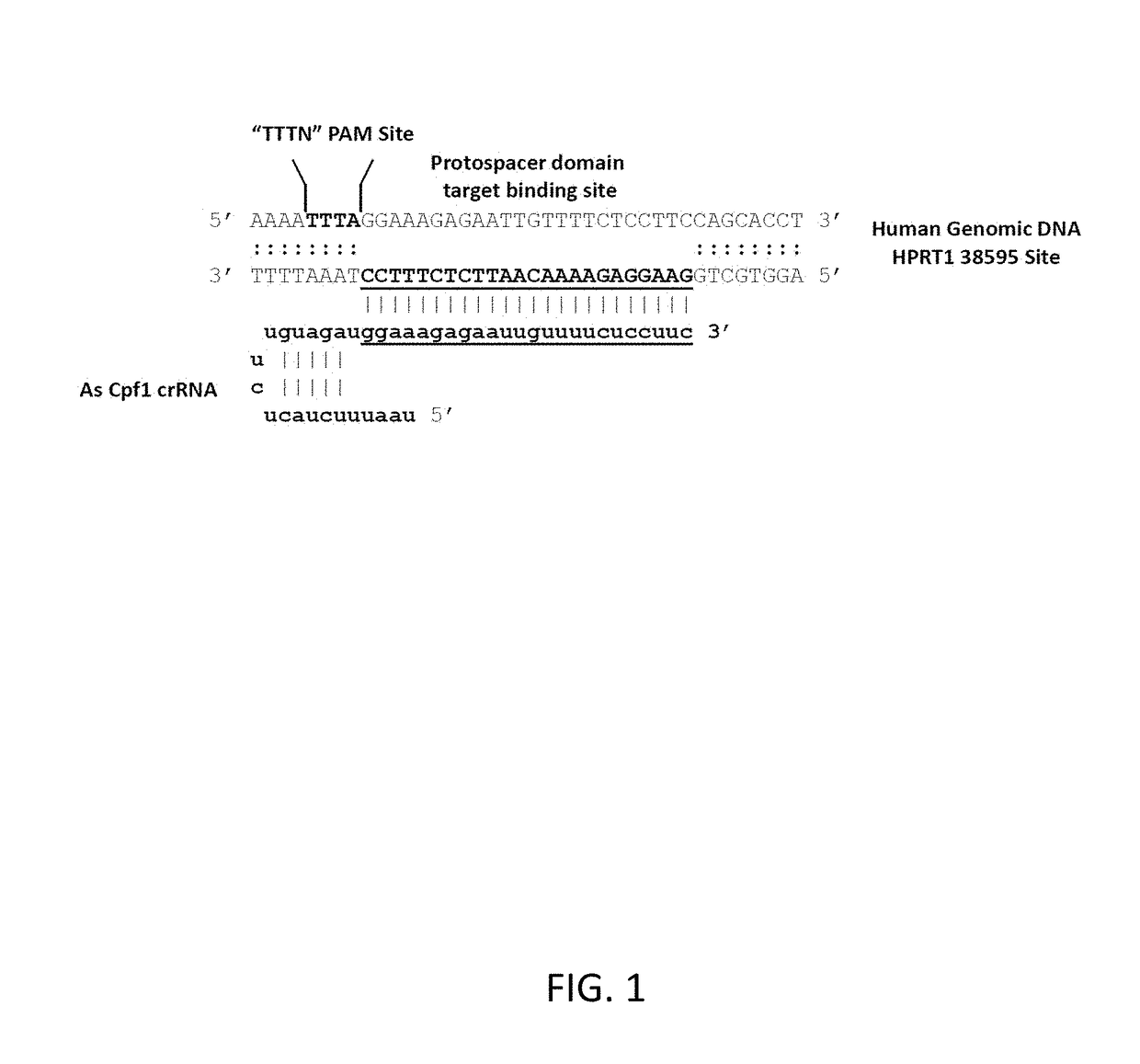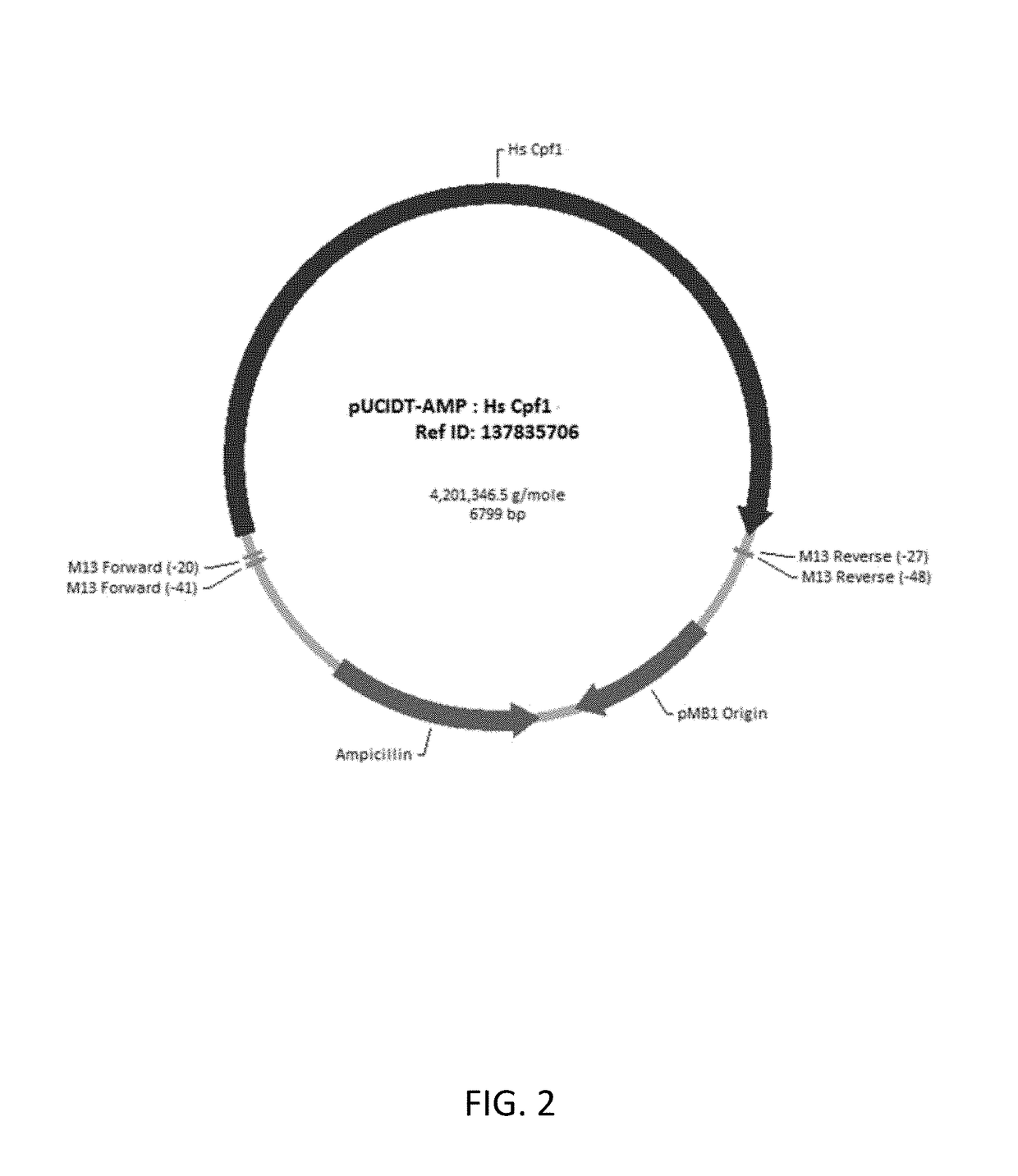Crispr/cpf1 systems and methods
a technology of cpf1 and crispr, applied in the field of cpf1based crispr genes, can solve the problems of frameshift mutation, double-stranded break in genomic dna, and disruption of the natural dna sequen
- Summary
- Abstract
- Description
- Claims
- Application Information
AI Technical Summary
Benefits of technology
Problems solved by technology
Method used
Image
Examples
example 1
[0082]DNA and Amino Acid Sequences of Wild Type as Cpf1 Polypeptide, as Encoded in Isolated Nucleic Acid Vectors
[0083]The list below shows wild type (WT) As Cpf1 nucleases expressed as a polypeptide fusion protein described in the present invention. It will be appreciated by one with skill in the art that many different DNA sequences can encode / express the same amino acid (AA) sequence since in many cases more than one codon can encode for the same amino acid. The DNA sequences shown below only serve as example and other DNA sequences that encode the same protein (e.g., same amino acid sequence) are contemplated. It is further appreciated that additional features, elements or tags may be added to said sequences, such as NLS domains and the like. Examples are shown for WT AsCpf1 showing amino acid and DNA sequences for those proteins as Cpf1 alone and Cpf1 fused to both C-terminal and N-terminal SV40 NLS domains and a HIS-tag. Amino acid sequences that represent NLS sequences, domain...
example 2
[0084]Preparation of Isolated Vectors Expressing Nucleic Acid Encoding Human Codon-Optimized AsCpf1 Polypeptide Fusion Protein and Human Cell Lines Stably Expressing the as Cpf1 Polypeptide Fusion Protein.
[0085]The reference amino acid for AsCpf1 has been published. See Zetsche, B., Gootenberg, J. S., Abudayyeh, O. O., Slaymaker, I. M., Makarova, K. S., Essletzbichler, P., Volz, S. E., Joung, J., van der Oost, J., Regev, A., Koonin, E. V., and Zhang, F. (2015) Cpf1 is a single RNA-guided endonuclease of a class 2 CRISPR-Cas system. Cell 163:1-13. A plasmid encoding human codon optimized AsCpf1, flanking nuclear localization signals (NLS) and 5′-V5 epitope tag, was generated by the Synthetic Biology department at Integrated DNA Technologies. Flanking the expression cassette was a 5′ XhoI and 3′ EcoRI restriction enzyme sites (FIG. 2). The Cpf1 plasmid was digested with XhoI and EcoRI (NEB), gel purified using a column based purification system (Qiagen) and ligated using T4 DNA Ligase...
example 3
[0094]crRNA Length Optimization: Testing Truncation of the 5′-20-Base Universal Loop Domain.
[0095]A set of 6 sites in the human HPRT1 gene were chosen to study length optimization of AsCpf1 crRNAs. A series of crRNAs were synthesized all having a 3′-24 base target-specific protospacer domain and having 5′-loop domains of 20, 19, 18, and 17 bases, representing a set of serial 1-base deletions from the 5′-end. A second set of crRNAs were synthesized at the same sites all having a 3′-21 base target-specific protospacer domain, likewise with 5′-loop domains of 20, 19, 18, and 17 bases.
[0096]An HEK cell line that stably expresses the AsCpf1 endonuclease was employed in these studies (Example 2). In a reverse transfection format, anti-HPRT1 crRNAs were individually mixed with Lipofectamine RNAiMAX (Life Technologies) and transfected into the HEK-Cpf1 cell line. Transfections were done with 40,000 cells per well in 96 well plate format. RNAs were introduced at a final concentration of 30 n...
PUM
| Property | Measurement | Unit |
|---|---|---|
| Fraction | aaaaa | aaaaa |
| Fraction | aaaaa | aaaaa |
| Fraction | aaaaa | aaaaa |
Abstract
Description
Claims
Application Information
 Login to View More
Login to View More - R&D
- Intellectual Property
- Life Sciences
- Materials
- Tech Scout
- Unparalleled Data Quality
- Higher Quality Content
- 60% Fewer Hallucinations
Browse by: Latest US Patents, China's latest patents, Technical Efficacy Thesaurus, Application Domain, Technology Topic, Popular Technical Reports.
© 2025 PatSnap. All rights reserved.Legal|Privacy policy|Modern Slavery Act Transparency Statement|Sitemap|About US| Contact US: help@patsnap.com



